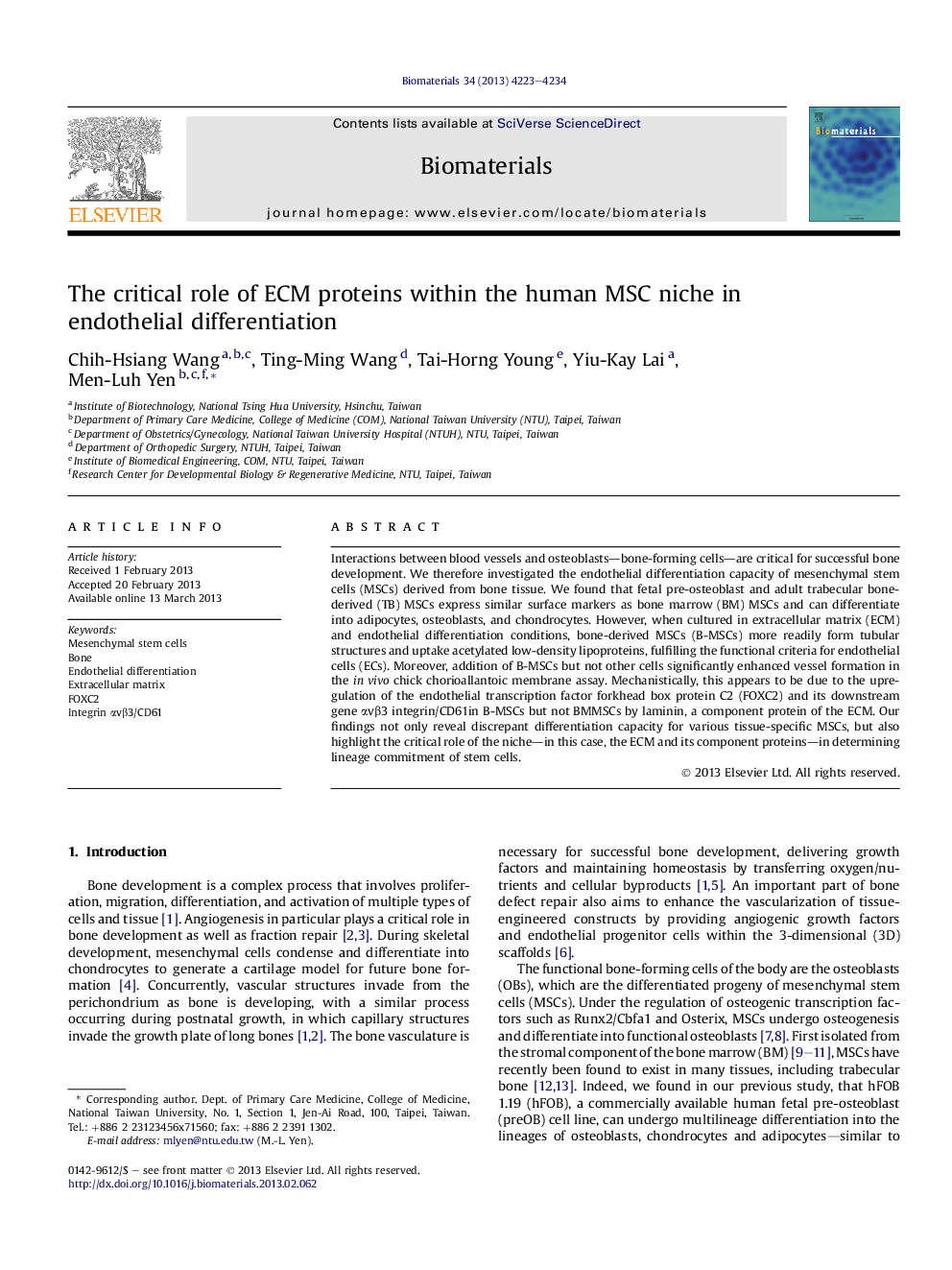| Article ID | Journal | Published Year | Pages | File Type |
|---|---|---|---|---|
| 6415 | Biomaterials | 2013 | 12 Pages |
Interactions between blood vessels and osteoblasts—bone-forming cells—are critical for successful bone development. We therefore investigated the endothelial differentiation capacity of mesenchymal stem cells (MSCs) derived from bone tissue. We found that fetal pre-osteoblast and adult trabecular bone-derived (TB) MSCs express similar surface markers as bone marrow (BM) MSCs and can differentiate into adipocytes, osteoblasts, and chondrocytes. However, when cultured in extracellular matrix (ECM) and endothelial differentiation conditions, bone-derived MSCs (B-MSCs) more readily form tubular structures and uptake acetylated low-density lipoproteins, fulfilling the functional criteria for endothelial cells (ECs). Moreover, addition of B-MSCs but not other cells significantly enhanced vessel formation in the in vivo chick chorioallantoic membrane assay. Mechanistically, this appears to be due to the upregulation of the endothelial transcription factor forkhead box protein C2 (FOXC2) and its downstream gene αvβ3 integrin/CD61in B-MSCs but not BMMSCs by laminin, a component protein of the ECM. Our findings not only reveal discrepant differentiation capacity for various tissue-specific MSCs, but also highlight the critical role of the niche—in this case, the ECM and its component proteins—in determining lineage commitment of stem cells.
